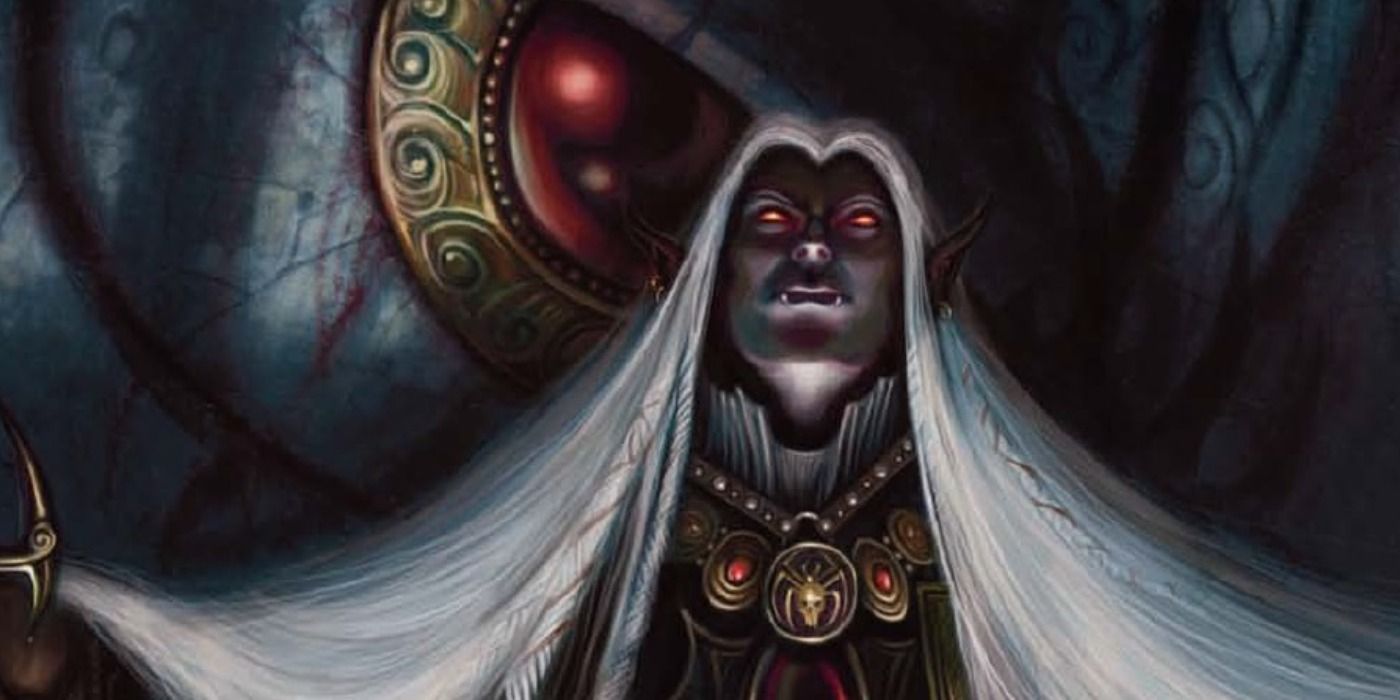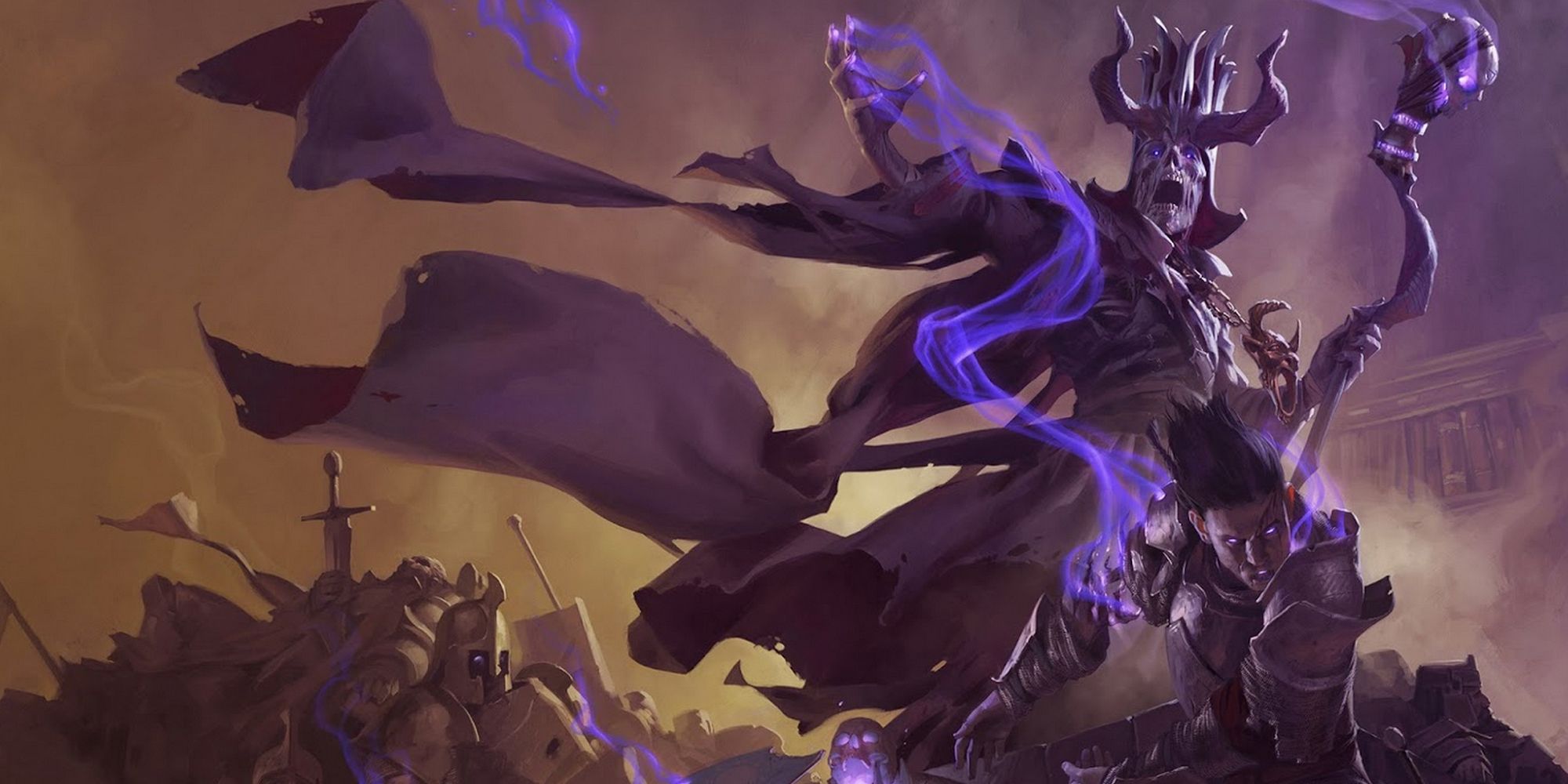Necromancy is one of the eight schools of magic in Dungeons & Dragons and it's used in very different ways by Clerics and Wizards. The Clerics of D&D use necromancy to restore their dead friends to life, while Wizards use it to create the living dead, so they can be set upon their enemies. Necromancy is also effective at instilling fear in mortals, as well as draining the life force from living beings.
The Wizards who choose D&D's School of Necromancy for their Arcane Tradition are the experts of keeping themselves healthy (which is ironic, for a class associated with death) and creating powerful undead servants. The Grim Harvest ability lets the necromancer drain hit points when killing enemies with a spell, which is a great way to top up health during battle. The 6th level Undead Thralls ability lets them summon an additional servant with animate dead and bolsters their strength, giving the necromancer some beefier bodyguards. The 10th level Inured to Undead ability stops the necromancer from having their hit point maximum reduced, which would have been way better in older editions of D&D, when negative levels were far more detrimental. The 14th level Command Undead ability lets the necromancer attempt to wrestle control of an undead being, which can be potentially game-breaking in adventures with high-level undead threats.
The Player's Handbook lists all spells alphabetically, with the specific schools noted in the spell descriptions, rather than the initial lists. This guide contains all of the necromancy spells in D&D that are used by every class in the game, with notes next to all of the ritual spells. The guide also contains all of the necromancy spells that appear in official rulebooks, such as Tasha's Cauldron of Everything and Xanather's Guide to Everything, all of which are marked, so players know where to find these spells if they wish to learn more.
The Necromancy Spells In Dungeons & Dragons
Necromancy Cantrips
- Chill Touch
- Sapping Sting (Explorer’s Guide To Wildemount)
- Spare the Dying
- Toll the Dead (Xanathar’s Guide to Everything)
1st Level Necromancy Spells
- Cause Fear (Xanathar’s Guide to Everything)
- False Life
- Inflict Wounds
- Ray of Sickness
2nd Level Necromancy Spells
- Blindness/Deafness
- Gentle Repose
- Ray of Enfeeblement
- Wither and Bloom (Strixhaven: A Curriculum of Chaos)
3rd Level Necromancy Spells
- Animate Dead
- Bestow Curse
- Feign Death (Ritual)
- Life Transference (Xanathar’s Guide to Everything)
- Revivify
- Speak with Dead
- Spirit Shroud (Tasha’s Cauldron of Everything)
- Vampiric Touch
4th Level Necromancy Spells
- Blight
- Shadow of Moil (Xanathar’s Guide to Everything)
5th Level Necromancy Spells
- Contagion
- Danse Macabre (Xanathar’s Guide to Everything)
- Enervation (Xanathar’s Guide to Everything)
- Negative Energy Flood (Xanathar’s Guide to Everything)
- Raise Dead
6th Level Necromancy Spells
- Circle of Death
- Create Undead
- Eyebite
- Harm
- Magic Jar
- Soul Cage (Xanathar’s Guide to Everything)
7th Level Necromancy Spells
- Finger of Death
- Resurrection
- Tether Essence (Explorer’s Guide To Wildemount)
8th Level Necromancy Spells
- Clone
- Abi-Dalzim’s Horrid Wilting (Xanathar’s Guide to Everything)
9th Level Necromancy Spells
- Astral Projection
- Time Ravage (Explorer’s Guide To Wildemount)
- True Resurrection
The role of the necromancer has changed a great deal in the fifth edition of D&D. In the old days of the game, creating undead was seen as an evil act, and most adventurers were unable to use spells like animate dead without risking their D&D alignment. The costly component for animate dead in third edition also made it an unattractive prospect. The current edition of Dungeons & Dragons is a lot more forgiving about the use of necromancy, and spells like animate dead are a great choice when the caster needs some muscle around them when there are lots of foes on the field. Necromancy is also crucial for Clerics, as it's the school that contains revivify, raise dead, and resurrection, all of which are vital for keeping the group together, even when the Grim Reaper comes calling.


